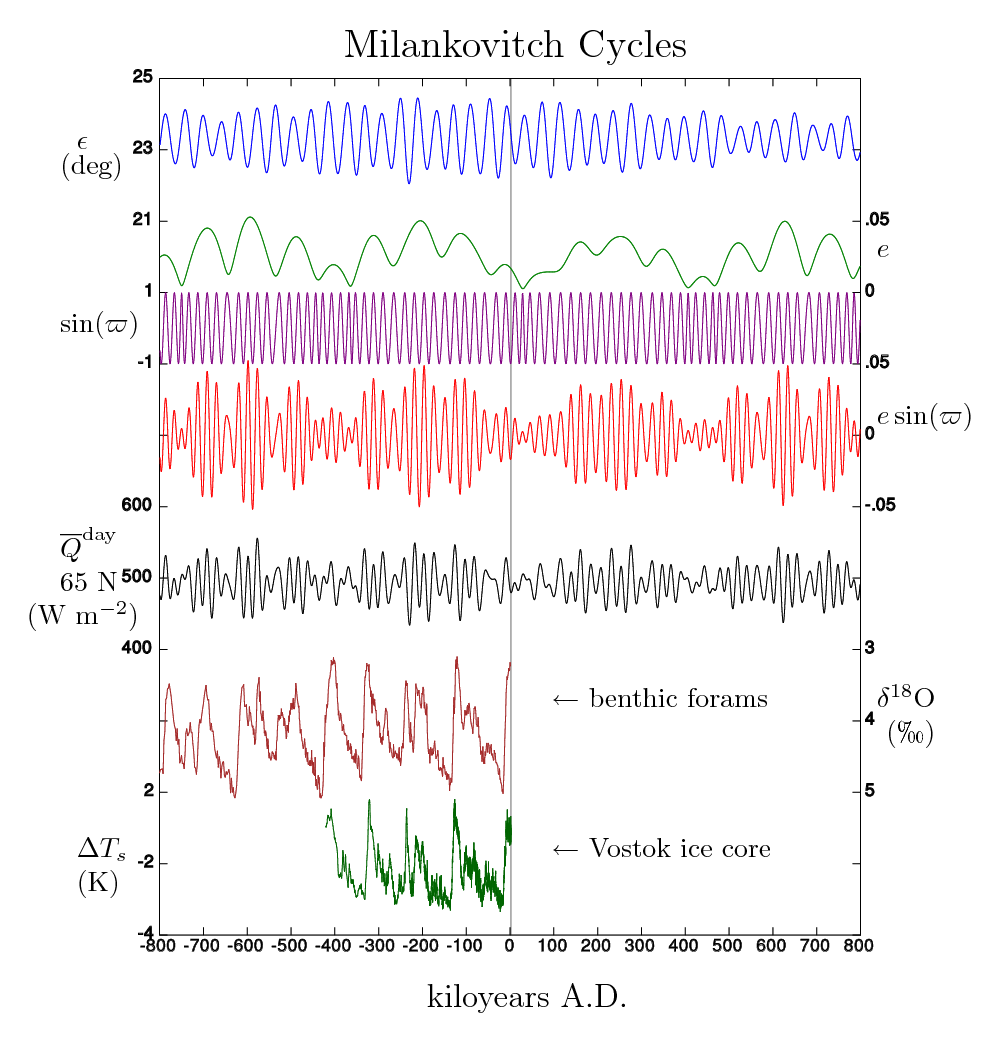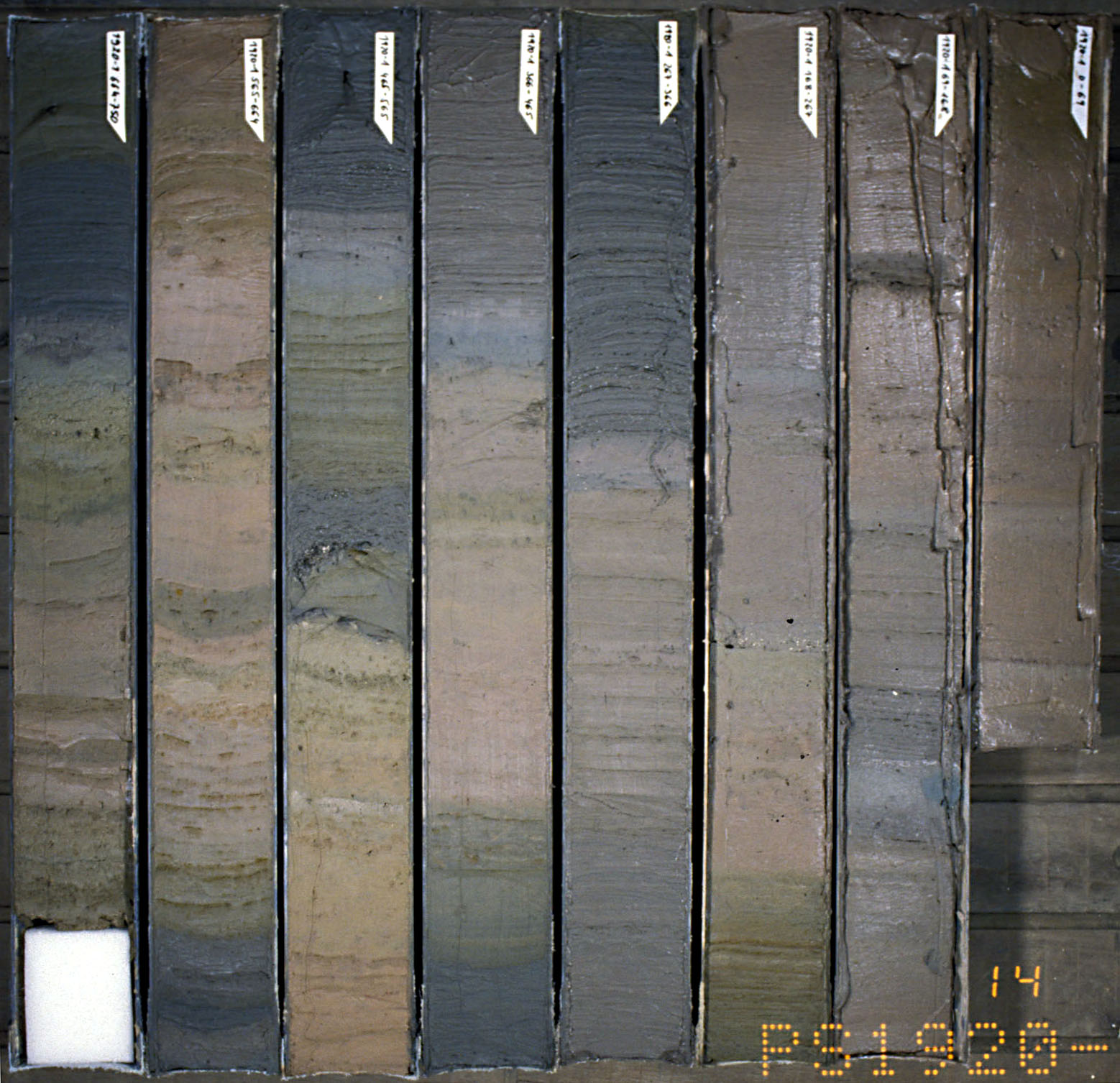|
Danube (geology)
Danube or Donau is a timespan in the glacial history of the Alps. Danube is currently regarded to have started approximately 1.8 million years ago, at the start of the Calabrian age of the international geochronology. It ended approximately one million years ago. Deep sea core samples have identified approximately 20 glacial cycles during Danube. History of the term The Danube glaciation, Donau glaciation (german: Donau-Kaltzeit) or the Danube Glacial (''Donau-Glazial'') was named by Barthel Eberl in 1930 after the River Danube. It did not appear in the traditional, quadripartite ice age schema of the Alps by Albrecht Penck. The Danube was the oldest glaciation in the Alps for which there was evidence outside of the Iller-Lech region. Danube Stage was thought to be preceded by the Biber-Danube interglacial and followed by the Danube-Günz interglacial. The 2016 version of the detailed stratigraphic table by the German Stratigraphic Commission firmly places Danube (Donau) in the ... [...More Info...] [...Related Items...] OR: [Wikipedia] [Google] [Baidu] |
Alps
The Alps () ; german: Alpen ; it, Alpi ; rm, Alps ; sl, Alpe . are the highest and most extensive mountain range system that lies entirely in Europe, stretching approximately across seven Alpine countries (from west to east): France, Switzerland, Italy, Liechtenstein, Austria, Germany, and Slovenia. The Alpine arch generally extends from Nice on the western Mediterranean to Trieste on the Adriatic and Vienna at the beginning of the Pannonian Basin. The mountains were formed over tens of millions of years as the African and Eurasian tectonic plates collided. Extreme shortening caused by the event resulted in marine sedimentary rocks rising by thrusting and folding into high mountain peaks such as Mont Blanc and the Matterhorn. Mont Blanc spans the French–Italian border, and at is the highest mountain in the Alps. The Alpine region area contains 128 peaks higher than . The altitude and size of the range affect the climate in Europe; in the mountains, precipitation ... [...More Info...] [...Related Items...] OR: [Wikipedia] [Google] [Baidu] |
Eburonian
The Eburonian (german: Eburon or ''Eburonium''), or, much less commonly, the Eburonian Stage, is a glacial complex in the Calabrian age of the Pleistocene epoch and lies between the Tegelen and the Waalian interglacial. The transition from the Tegelen to the Eburonian started about 1.78 million years ago, lasted 480,000 years (to 1.3 million years ago). In geologic strata, at its base, from its startpoint, the Neogene underlies different Gelasian deposits starkly in much of the Netherlands.Hey, R. W. ''The Plio-Pleistocene of England and Iceland'' in Van Couvering, John A. (editor), (1997) ''The Pleistocene Boundary and the Beginning of the Quaternary'', Cambridge, Cambridge University Press, p. 183. . Discovery As early as the 1920s, the names of the three well known glaciations - the Elster, the Saale and the Weichselian - had become established at the recommendation of Konrad Keilhack and Paul Woldstedt. After Penck & Brückner successfully identified a fourth glaciation in ... [...More Info...] [...Related Items...] OR: [Wikipedia] [Google] [Baidu] |
Pleistocene Events
The Pleistocene ( , often referred to as the ''Ice age'') is the geological epoch that lasted from about 2,580,000 to 11,700 years ago, spanning the Earth's most recent period of repeated glaciations. Before a change was finally confirmed in 2009 by the International Union of Geological Sciences, the cutoff of the Pleistocene and the preceding Pliocene was regarded as being 1.806 million years Before Present (BP). Publications from earlier years may use either definition of the period. The end of the Pleistocene corresponds with the end of the last glacial period and also with the end of the Paleolithic age used in archaeology. The name is a combination of Ancient Greek grc, label=none, πλεῖστος, pleīstos, most and grc, label=none, καινός, kainós (latinized as ), 'new'. At the end of the preceding Pliocene, the previously isolated North and South American continents were joined by the Isthmus of Panama, causing a faunal interchange between the two reg ... [...More Info...] [...Related Items...] OR: [Wikipedia] [Google] [Baidu] |
Timeline Of Glaciation
There have been five or six major ice ages in the history of Earth over the past 3 billion years. The Late Cenozoic Ice Age began 34 million years ago, its latest phase being the Quaternary glaciation, in progress since 2.58 million years ago. Within ice ages, there exist periods of more severe glacial conditions and more temperate conditions, referred to as glacial periods and interglacial periods, respectively. The Earth is currently in such an interglacial period of the Quaternary glaciation, with the last glacial period of the Quaternary having ended approximately 11,700 years ago. The current interglacial is known as the Holocene epoch.Walker, M., Johnsen, S., Rasmussen, S. O., Popp, T., Steffensen, J.-P., Gibbard, P., Hoek, W., Lowe, J., Andrews, J., Bjo¨ rck, S., Cwynar, L. C., Hughen, K., Kershaw, P., Kromer, B., Litt, T., Lowe, D. J., Nakagawa, T., Newnham, R., and Schwander, J. 2009Formal definition and dating of the GSSP (Global Stratotype Section and Point) for ... [...More Info...] [...Related Items...] OR: [Wikipedia] [Google] [Baidu] |
Mid-Pleistocene Transition
The Mid-Pleistocene Transition (MPT), also known as the Mid-Pleistocene Revolution (MPR), is a fundamental change in the behaviour of glacial cycles during the Quaternary glaciations. The transition happened approximately 1.25–0.7 million years ago, in the Pleistocene epoch. Before the MPT, the glacial cycles were dominated by a 41,000-year periodicity with low-amplitude, thin ice sheets and a linear relationship to the Milankovitch forcing from axial tilt. After the MPT there have been strongly asymmetric cycles with long-duration cooling of the climate and build-up of thick ice sheets, followed by a fast change from extreme glacial conditions to a warm interglacial. The cycle lengths have varied, with an average length of approximately 100,000 years. The Mid-Pleistocene Transition was long a problem to explain, as described in the article '' 100,000-year problem''. The MPT can now be reproduced by numerical models that assume a decreasing level of atmospheric carbon d ... [...More Info...] [...Related Items...] OR: [Wikipedia] [Google] [Baidu] |
Milankovitch Cycles
Milankovitch cycles describe the collective effects of changes in the Earth's movements on its climate over thousands of years. The term was coined and named after Serbian geophysicist and astronomer Milutin Milanković. In the 1920s, he hypothesized that variations in eccentricity, axial tilt, and precession combined to result in cyclical variations in the intra-annual and latitudinal distribution of solar radiation at the Earth's surface, and that this orbital forcing strongly influenced the Earth's climatic patterns. Earth's movements The Earth's rotation around its axis, and revolution around the Sun, evolve over time due to gravitational interactions with other bodies in the Solar System. The variations are complex, but a few cycles are dominant. The Earth's orbit varies between nearly circular and mildly elliptical (its eccentricity varies). When the orbit is more elongated, there is more variation in the distance between the Earth and the Sun, and in the amount of S ... [...More Info...] [...Related Items...] OR: [Wikipedia] [Google] [Baidu] |
Marine Isotope Stage
Marine isotope stages (MIS), marine oxygen-isotope stages, or oxygen isotope stages (OIS), are alternating warm and cool periods in the Earth's paleoclimate, deduced from oxygen isotope data reflecting changes in temperature derived from data from deep sea core samples. Working backwards from the present, which is MIS 1 in the scale, stages with even numbers have high levels of oxygen-18 and represent cold glacial periods, while the odd-numbered stages are lows in the oxygen-18 figures, representing warm interglacial intervals. The data are derived from pollen and foraminifera (plankton) remains in drilled marine sediment cores, sapropels, and other data that reflect historic climate; these are called proxies. The MIS timescale was developed from the pioneering work of Cesare Emiliani in the 1950s, and is now widely used in archaeology and other fields to express dating in the Quaternary period (the last 2.6 million years), as well as providing the fullest and best data ... [...More Info...] [...Related Items...] OR: [Wikipedia] [Google] [Baidu] |
Menapian
The Menapii were a Belgic tribe dwelling near the North Sea, around present-day Cassel, during the Iron Age and the Roman period. Name Attestations They are mentioned as ''Menapii'' by Caesar (mid-1st c. BC) and Orosius (early 5th c. AD), ''Menápioi'' (Μενάπιοι; var. Μονάπιοι, Μενάσπιοι) by Strabo (early 1st c. AD) and Ptolemy (2nd c. AD), as ''Menapi'' by Pliny (1st c. AD) and the '' Notitia Dignitatum'' (5th c. AD), and under the accusative forms ''Menapios'' by Tacitus (early 2nd c. AD) and ''Menapíous'' (Μεναπίους) by Cassius Dio (3rd c. AD)., s.v. ''Menapii'' and ''Castellum Menapiorum''. Etymology The Gaulish ethnonym ''Menapii'' has been phonetically compared with '' Manapii'', the name of a tribe from southeastern Ireland mentioned by Ptolemy in the 2nd century AD. These tribal names may ultimately derive from a Proto-Celtic form reconstructed as *''Menakwī'' or *''Manakwī'', whose meaning remains uncertain, perhaps the 'm ... [...More Info...] [...Related Items...] OR: [Wikipedia] [Google] [Baidu] |
Waalian Interglacial
The Waalian interglacial (german: Waal-Warmzeit or ''Waal-Interglazial'') or Waalian Stage was an interglacial period of the Early Pleistocene in north-west Europe. It was preceded by the Eburonian Stage and succeeded by the Menapian Stage. It coincides with part of the much longer Beestonian stage in Britain. It is variously dated by different authorities. Oxford Reference gives 1.3 to 0.9 million years ago and the British Geological Survey 1.6 to 1.36 million years ago. However, the 2020 chart of the international authority on stratigraphic dating, the International Commission on Stratigraphy shows it as c. 1.6 to 1.4 million years ago. Its name is derived from a major branch of the Rhine delta, the Waal WAAL (99.1 FM "The Whale") is a commercial radio station licensed to Binghamton, New York. It airs a classic rock radio format and is owned by Townsquare Media. WAAL is the oldest FM radio station in the Binghamton metropolitan area. It is an .... References {{North ... [...More Info...] [...Related Items...] OR: [Wikipedia] [Google] [Baidu] |
Gunz (geology)
Gunz, Günz or Gunz Complex is a timespan in the glacial history of the Alps. It started approximately one million years ago and ended about 370 000 years ago. Some sources put the end at 480 000 years ago. Deep sea core samples have identified approximately 5 glacial cycles of varying intensity during Gunz. History of the term The name Gunz glaciation, Gunzian glaciation or Günz glacial stage (german: Günz-Kaltzeit, also ''Günz-Glazial'', ''Günz-Komplex'' and ''Günz-Eiszeit'') goes back to Albrecht Penck and Eduard Brückner, who named this ice age after the River Günz in their multi-volume work, ''Die Alpen im Eiszeitalter'' ("The Alps in the Ice Age Period") which was published between 1901 and 1909. Its type region is the Iller-Lech Plateau. It is the oldest glaciation of the Pleistocene in the traditional, quadripartite glacial classification of the Alps. The Günz was thought to follow the Danube-Günz interglacial and was ended by the Günz-Haslach interglacial. T ... [...More Info...] [...Related Items...] OR: [Wikipedia] [Google] [Baidu] |
Calabrian (stage)
Calabrian is a subdivision of the Pleistocene Epoch of the geologic time scale, defined as 1.8 Ma—774,000 years ago ± 5,000 years, a period of ~. The end of the stage is defined by the last magnetic pole reversal (781 ± 5 Ka) and plunge into an ice age and global drying possibly colder and drier than the late Miocene ( Messinian) through early Pliocene (Zanclean) cold period. Originally the Calabrian was a European faunal stage primarily based on mollusk fossils. It has become the second geologic age in the Early Pleistocene. Many of the mammalian faunal assemblages of the Early Pleistocene start in the Gelasian. For example, the Platygonus and other Blancan fauna appear first in the Gelasian. History of the definition of the Calabrian Because sea shells are much more abundant as fossils, 19th- and early-20th-century geo-scientists used the plentiful and well-differentiatable Mollusca (mollusks) and Brachiopods to identify stratigraphic boundaries. Thus the Calabrian was ... [...More Info...] [...Related Items...] OR: [Wikipedia] [Google] [Baidu] |





